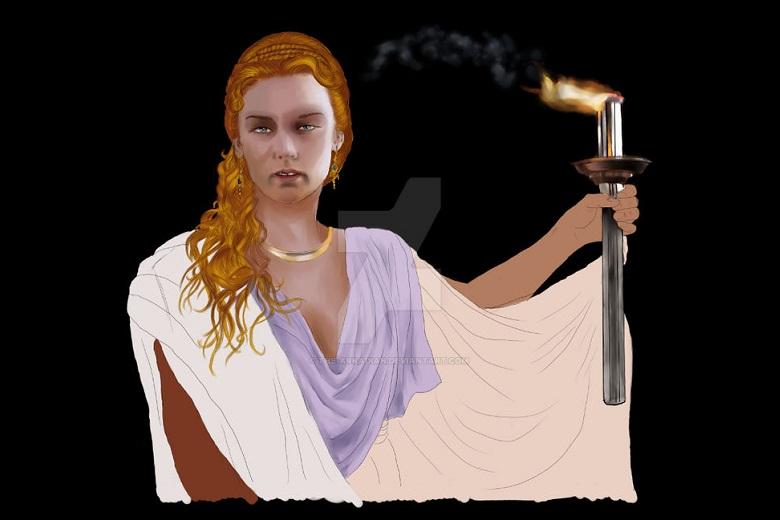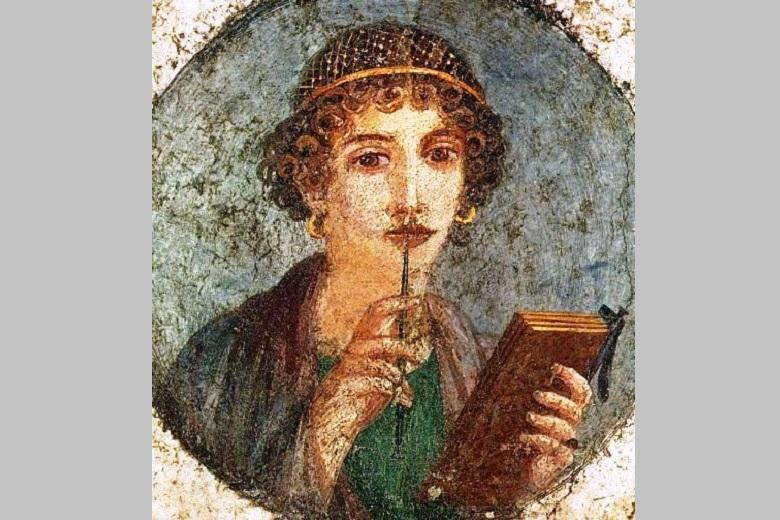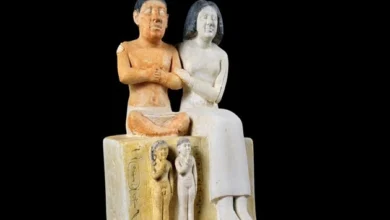5 deadly ancient Greek beauties: everything about them is fiction

The myths about the femme fatale of Ancient Greece tickle the nerves and make the girls sigh: that’s what people went to for the sake of love and beauty. Many of the stories we know about these women are late fiction.
Five fatal ancient Greek beauties: why almost everything interesting about them is fiction?
Thais Athens

Thanks to the Soviet writer Ivan Efremov, we know that Thais was so perfect that she was not afraid to spoil her skin with a tan and had the right to criticize the statues of Aphrodite for their flat bottom; she was in love with Alexander the Great and was recognized by the philosophers of her time as if not clever, then cunning; entered the cities conquered by Alexander naked, since actual Greeks are not ashamed of their bodies; married a colleague of Alexander Ptolemy and became an Egyptian queen, and finally burned the palace of Xerxes.
Only the last two statements are factual: Thais married Ptolemy and became the queen of Egypt, and Thais, during a feast in conquered Persepolis, offered to burn Xerxes’ palace. Despite all the extraordinary beauty painted by Efremov, it is not known that Thais took part in the festivities, embodying some goddess, or ever posed for a sculptor – and they liked to invite beautiful heters for both. Moreover, nothing is known about her mind.
Not a single chronicle of the deeds of Alexander the Great also mentions that she went naked in public. Perhaps Thais did not particularly anneal at all (except for the palace, of course), which is why Ptolemy could marry her without any problems.
Sappho

Poetess Sappho was notable because, not being a heterosexual, she allowed herself great liberties. She was actively involved in art – as a child, she composed several hymns performed at religious holidays and later wrote songs for women’s gatherings. But the main thing that she is famous for is that she opened the art of same-sex love to girls and that one day she seemed to fall in love with a sailor and threw herself off a cliff into the sea when he did not return.
But what is it? For a start, with men at Sappho, everything was more uncomplicated: she did not fall in love with a sailor (this is a myth about one female deity, who for some reason began to talk about the poetess), but got married for reasons of “the time has come” and gave birth to a child. She became a widow very quickly, and the child, as often happened in those days, did not live long either.
As for opening love to girls, Sappho, in many cases, was not interested in the girls’ opinion at all. As the daughter of a typical Greek wealthy and noble family – although she found herself in exile after the coup – she divided people not only by gender but also by, let’s say, varieties. Sappho bought herself slaves and used them at her discretion. The slaves did not have the right to refuse their mistresses, so, with a high probability, many of her mistresses did not become them at the behest of the heart. This is one reason why modern lesbians tend to move away from the image of Sappho as the most famous lover of women and look for heroines in modern times.
But in the eighteenth and nineteenth centuries, much more often, Sappho was remembered as a woman who dared to engage in “non-feminine business” – the arts, and almost every outstanding poetess or musician was compared to her. The fatal lady Sappho made the alleged affair with the poet Alkey – allegedly, he courted the poetess, but she went no further than an exchange of songs. Modern scholars of antiquity strongly doubt that the songs of both have anything to do with the novel and whether there was a novel.
Rhodopis

The myth is popular that for the first time, the tale of Cinderella – a girl who was found by a lost shoe – appeared in Ancient Egypt. This is not entirely true. A more popular version clarifies that the case still took place in antiquity. The Egyptian pharaoh found a Greek girl of extraordinary beauty by the name of Rhodopis from a shoe. Contrary to all customs, he allegedly took her as his wife, and after her death, he erected a pyramid around her tomb.
Rhodopis existed. According to Herodotus, she was a slave from the Balkan tribes and sold as a prostitute by her master. She was bought by the brother of that same Sappho, after which she became a respected hetaera and made a great sacrifice to the temple to celebrate.
Later authors argue with Herodotus, claiming that Rhodopis lived later than Sappho and her brother, but it was about Doricha. It is also possible that after Doricha was ransomed, she came with her brother Sappho to Lesbos and began to sing in the Sappho choir. In general, a sad story with a good, albeit very dull ending – no pyramids, pharaohs and shoes.
By the way, about the shoe: if Rhodopis was a prostitute, it is not surprising that the pharaoh fell in love with the shoe. Unlike decent women, prostitutes wore shoes that repeated the shape of the foot (that is, right and left), and even interestingly decorated – this could inflame the imagination, so it is not surprising that, when writing a fairy tale about a prostitute, an unknown author introduced this detail.
Queen Cleopatra

By the way, about the eternal confusion of Ancient and Antique Egypt. Although she ruled Egypt, Queen Cleopatra was Greek, not Egyptian – she belonged to the very dynasty founded by Ptolemy and Thais of Athens. For centuries, it is customary to represent her as an extraordinary beauty who spent nights with men in exchange for their lives and met Caesar, jumping out of the carpet, which the Egyptians gave him.
Let’s start with the fact that in the original legend about the carpet, instead of a carpet, a laundry bag appeared, and continue with the fact that all the histories about the beauty and depravity of Cleopatra appear very much later than her death.
The most reliable description of Cleopatra notes that she is not so beautiful but has a charming voice. How did a not-too-pretty woman conquer Caesar? Firstly, he was very voluptuous and did not keep himself for dazzling beauties – it was enough for a woman to be pretty. Secondly, Cleopatra on the throne of Egypt was simply beneficial to him. But Mark Antony was in love with her sincerely.
Helen of Troy

A woman who was twice kidnapped (and once she just married for love – for king Menelaus) because of her incomparable beauty – this is the history that has developed around Elena the Beautiful. When Troy was found, and it became clear that the Achaeans had ravaged it, it seemed that the legend was confirmed.
But, alas, experts in mythology believe that Elena is simply the Spartan goddess of beauty and fertility who has lost her divine status; that is, the stories about her are a remake of old myths in those days when she ceased to be a goddess, but the very memory that she was Elena, still lingering.




